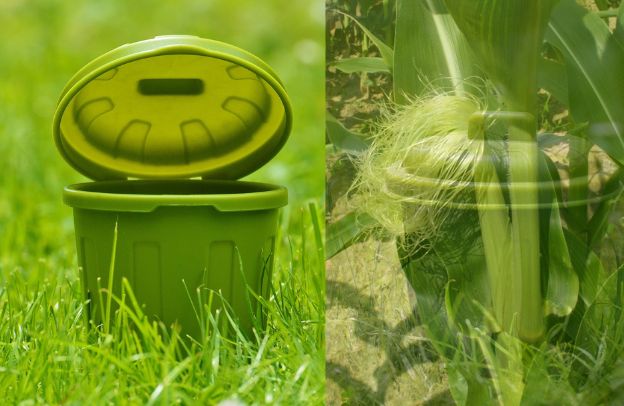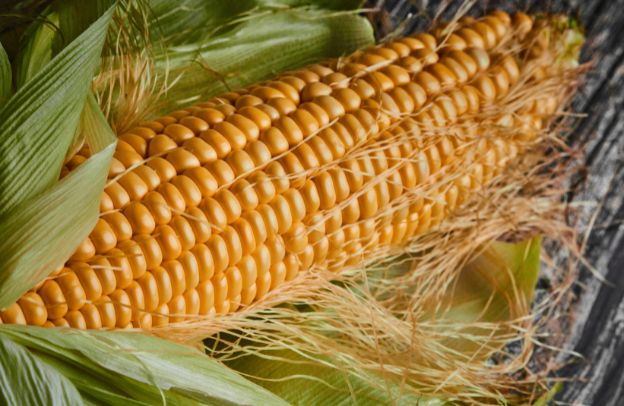How to make corn-based adhesives

Adhesives are a type of bonding agent that are used to join two or more surfaces together. They are widely used in a variety of industries such as construction, packaging, and manufacturing. Adhesives are important as they can provide strong and durable bonds, and can often be used in place of mechanical fasteners such as nails and screws.
Join AClasses Academy if you want to learn more about Content Creation Strategy and how to leverage content for your Business.
Corn-based adhesives are a type of adhesive made from corn starch, corn gluten, or other corn-based ingredients. They are a sustainable alternative to traditional adhesives, as they are made from renewable resources and can be biodegradable. Corn-based adhesives are also non-toxic and safe to use, making them a popular choice for use in food packaging and other applications where safety is a concern.
The process of making corn-based adhesives involves several steps such as selecting the right variety of corn, harvesting, processing, formulation, and production. It’s important to follow safety measures and regulations when producing corn-based adhesives as the process involves handling flammable materials and chemicals.
Preparation for corn-based adhesives
The preparation stage is an important step in the production of corn-based adhesives. The first step is to select a suitable corn variety for adhesive production. This is usually a high-yielding variety that has a high starch or gluten content. The selection of the right variety of corn is crucial as it determines the yield, quality, and cost-effectiveness of the adhesive production process.
Once the corn variety is selected, the next step is to plan for the field layout and crop management. This includes factors such as the size and location of the field, the planting and harvesting dates, the irrigation and fertilization schedule, and the pest and disease management plan.
It’s important to consider the specific requirements of the selected corn variety and the local climate and soil conditions when planning the field layout and crop management. This will help to ensure optimal growth and yield, which can help to increase the efficiency and cost-effectiveness of the adhesive production process.
Additionally, farmers should consider using sustainable agricultural practices to minimize the environmental impact and maintain soil health. This can include practices such as conservation tillage, crop rotation, and the use of cover crops.
Overall, proper planning for the field layout and crop management is crucial for the successful and efficient production of corn-based adhesives. By selecting the right variety of corn and implementing sustainable agricultural practices, farmers can optimize the yield and quality of their corn crop, which can ultimately increase the efficiency and cost-effectiveness of the adhesive production process.
Top of Form
Harvesting and Processing
Harvesting and processing are critical steps in the production of corn-based adhesives. The techniques for harvesting corn depend on the maturity of the crop and the equipment available. The most common method is to use a combination, which cuts, threshes, and separates the grain from the cob.
Once the corn is harvested, it goes through a process of converting the starch or gluten into adhesives. This process involves multiple steps such as:
- Grinding the corn into a fine powder, also known as corn meal or gluten, to increase the surface area for the enzymes to work.
- Cooking the corn meal or gluten at high temperatures to break down the cell walls and release the starch or gluten.
- Adding enzymes to break down the starch or gluten into usable adhesive.
- Drying and milling the adhesive to a fine powder.
It’s important to note that the process of converting corn starch or gluten into adhesive is a complex process that requires specialized equipment and skilled personnel. Additionally, the process can generate by-products such as distillers dried grains and soluble (DDGS), which can be used as feed for livestock.
Overall, harvesting and processing are critical steps in the production of corn-based adhesives. By using the appropriate techniques for harvesting and processing, farmers can optimize the yield and quality of their corn crop, which can ultimately increase the efficiency and cost-effectiveness of the adhesive production process.
Formulation and Production
Formulation and production are important steps in the production of corn-based adhesives. The formulation process involves the selection and combination of different types of corn-based ingredients to create an adhesive with the desired properties. This may include ingredients such as corn starch, corn gluten, corn syrup, or other derivatives of corn.
Once the ingredients are selected, the adhesive is produced by mixing them together in the appropriate proportions. The mixture is then heated and cooled to activate the adhesive properties of the ingredients. The process may include adding other chemicals, crosslinkers and other ingredients that are used to improve the properties of the adhesive.
The production process is typically done on an industrial scale, and requires specialized equipment and skilled personnel. This process can be done in batches or continuously depending on the production volume.
It’s important to note that the formulation and production process can vary depending on the specific requirements of the adhesive and the industry it will be used in. The process may also require additional steps such as testing and quality control measures to ensure that the adhesive meets the desired specifications and complies with industry standards.
Overall, formulation and production are important steps in the production of corn-based adhesives. By using the appropriate techniques and equipment, farmers can produce adhesives that have the desired properties and can be used in various industries, which can ultimately increase the efficiency and cost-effectiveness of the adhesive production process.
Testing and Quality Control
Testing and quality control are critical steps in the production of corn-based adhesives to ensure that the adhesive meets the desired specifications and complies with industry standards.
Adhesive testing typically involves evaluating the adhesive for properties such as strength, viscosity, and other properties. This can include measuring the bond strength of the adhesive, its ability to resist temperature changes and humidity, and its ability to withstand different types of loads. The testing may also include determining the adhesive’s compatibility with the surfaces it will be used on and its safety.
Quality control measures are implemented to ensure consistency and compliance with standards. This can include inspecting the raw materials and finished products, monitoring the production process, and maintaining detailed records of production data. This also includes implementing a batch traceability system, so that in case of a problem, the source of the problem can be quickly identified and corrected.
Overall, testing and quality control are critical steps in the production of corn-based adhesives.
By conducting proper testing and implementing quality control measures, manufacturers can ensure that the adhesive meets the desired specifications and complies with industry standards, which can ultimately increase the efficiency and cost-effectiveness of the adhesive production process and ensure customer satisfaction.
Conclusion on how to make corn-based adhesives
Corn-based adhesives are a type of adhesive made from corn starch, corn gluten, or other corn-based ingredients. They are a sustainable alternative to traditional adhesives as they are made from renewable resources and can be biodegradable.
The first step in making corn-based adhesives is to select a suitable corn variety for adhesive production. This is usually a high-yielding variety that has a high starch or gluten content. Once the corn variety is selected, the field layout and crop management should be planned accordingly.
After the corn is harvested, it goes through a process of converting the starch or gluten into adhesives. This process involves multiple steps such as grinding the corn, cooking it, and then adding enzymes to break down the starch or gluten into the usable adhesive.
Once the adhesive is produced, it goes through a formulation process where different types of corn.
Join AClasses Academy if you want to learn more about Content Creation Strategy and how to leverage content for your Business.






